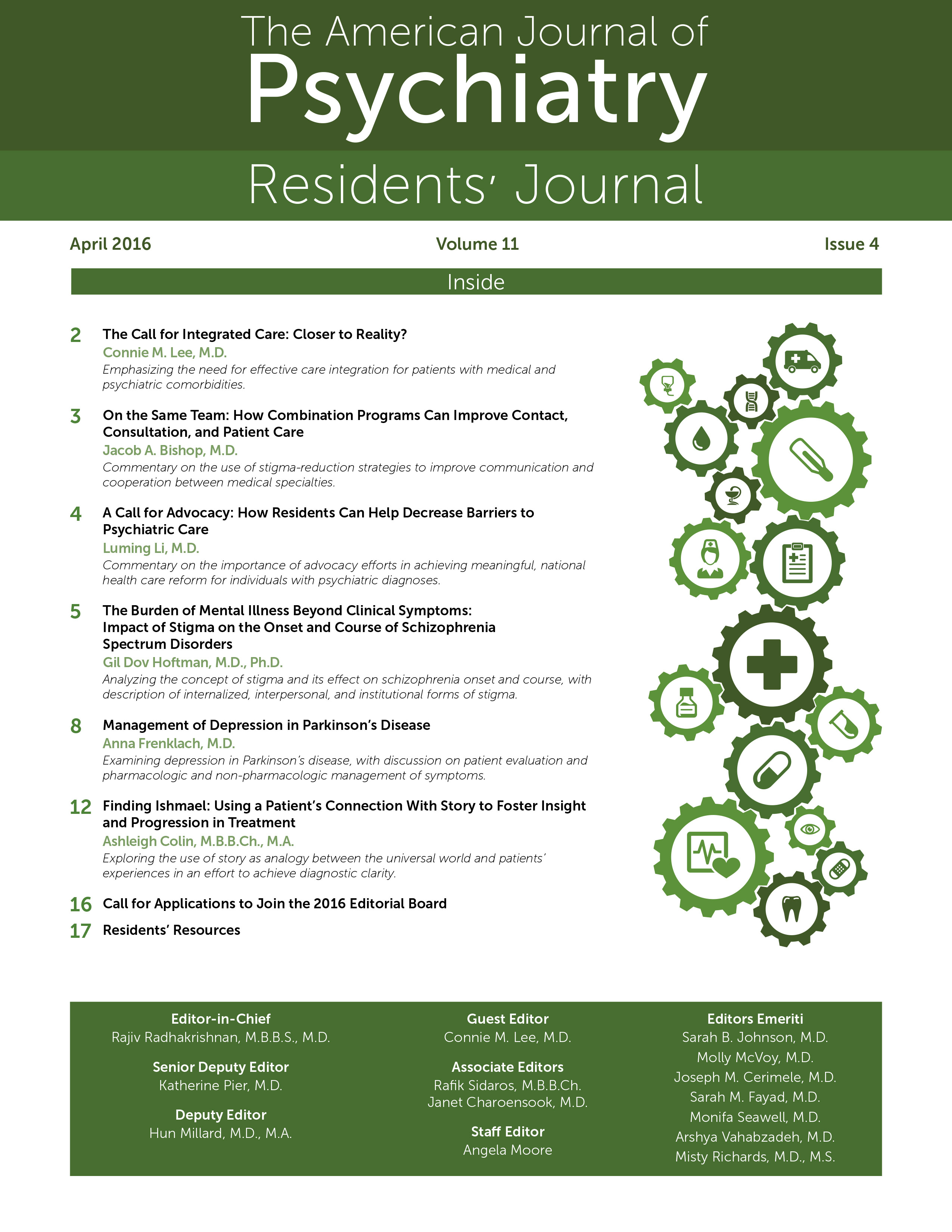Soon after residency training begins, the age-old comments are first heard from the dark corners of the hospital: “The patient doesn’t have a psychiatric problem”; “What will psychiatry do anyway?”; or “The patient will be upset by it.” These attitudes have been documented previously (
1) and still persist today, leading to dramatically low numbers of psychiatric consultations offered to patients, with some studies suggesting hospital referral rates as low as 1%–3% (
1–
2). Yet, integrating psychiatric and medical care has shown substantial benefits for treatment, costs, and patient satisfaction (
1–
3). Combined residency training programs offer a valuable opportunity to achieve this collaboration.
Stigma-reduction strategies are often used to improve communication and cooperation between supposed dissimilar groups. From a health care perspective, stigma reduction can improve integration of physicians in different fields. Corrigan and Kosyluk (
4) reviewed several of these strategies utilizing a social injustice framework. While the subjects differ, the principles can be applicable. Methods of stigma reduction that have shown positive results include “protest” involving actions that chastise those who perpetuate stigma, “education” that provides factual challenges to inaccurate stereotypes, and “contact” between perpetrators and stigmatized individuals. In terms of lasting progress, contact was found to be the superior form of stigma reduction, specifically when it is targeted, continuous, face-to-face contact between similarly credible groups.
Psychiatry clerkships in medical school are one example of contact yielding positive effects on attitudes toward psychiatry (
5). On a professional level, further integration is needed to facilitate contact between medical and mental health physicians. One strategy to do so is training individual physicians in both medical and mental health specialties, a feat well-accomplished by psychiatry combination programs. Currently, 33 residency programs exist that combine psychiatric training with other specialties of medical training, specifically internal medicine, family medicine, neurology, and pediatrics.
As a resident in a combined pediatric medicine and child/adult psychiatric training program, I have experienced firsthand how collaboration and face-to-face contact between medical and psychiatric providers positively affect patient care. One of my pediatric medicine months was spent with pediatric pulmonologists providing inpatient care to their patients. I was able to work alongside these physicians to provide medical care for patients with diagnoses such as cystic fibrosis, bronchopulmonary dysplasia, and congenital anomalies. As our work experience grew, the attendings’ trust in me continued to develop, and I was able to work with many of the patients on their mental health and behavioral concerns. Since that time, the pediatric pulmonology team has referred a number of patients to my pediatrics clinic for primary care with a stronger focus on mental health.
It has been estimated that 60% of patients with a psychiatric diagnosis receive no psychiatric treatment (
3). This is an unacceptably high number. As collaborative care is becoming more attainable, it is time to directly address the obstacles that prevent integration. Contact between specialties is essential to overcome the stigma preventing collaboration, and combination training is an excellent vehicle to accomplish that goal.
